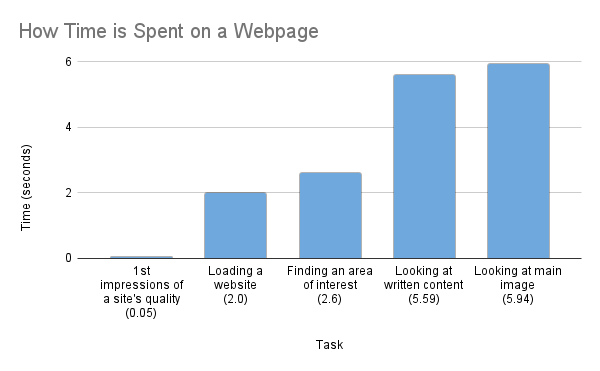

Selling Not Telling: How to Stand Out in Search
In a crowded internet of well over a billion websites, and increasingly intelligent search algorithms, the path to the coveted first page of Google is a difficult one. However, with 90% of B2B customer journeys starting with a search, showing up in search is invaluable.
The unique challenge of SEO is that in order to be effective, you essentially have to do the impossible: predict the future. 15% of searches are unique, meaning that 15% of the time someone searches, Google has never seen that exact combination of characters before, so as helpful as data from past searches can be, a large part of your job as an SEO is anticipating what people are going to search for.
So, assuming that you can’t predict the future, what is there to do?
Tell, Don’t Sell
You need to understand that Google was created to lead people to the information that they want to find, not to sell a product. What Google is looking for is the most relevant and helpful information. Yes, search engines—Google in particular—want to make money from their advertisers, but their main priority is to connect their users with informative content. If Google were to start prioritizing products over useful information, no one would use their site. It really is in Google’s best interest to show people what they want to see, not what a bunch of marketers and SEO experts want them to see.
Because of this, the content of your site is incredibly important when it comes to being found on search . Google doesn’t want a hard sell. As search algorithms improve their ability to understand human language, they also improve their ability to lead people to the right results. Simply having a few keywords isn’t going to cut it.
Define Your Brand
Start by clearly defining who you are and why you’re different. Be consistent with your messaging and language throughout your site, and include content that informs visitors about your brand. Most companies can’t compete with huge corporations who spend billions of dollars on SEO each year, but you can find your niche. If you sell pneumatic tools, you might not be able to make the first page for pneumatic tools or nail guns, but you might be able to compete for longer terms (or longtail keywords) such as nail guns for construction or pneumatic tools for OEMs. The more specific and unique you can be, the more likely you are to attract the right customers.
Good SEO targets a pool of potential visitors, and not just a general audience. Someone searching for best paint sprayers for outdoors likely has a specific interest in that product, not just paint sprayers in general. This significantly increases their likelihood of converting. Going for high-traffic terms can potentially boost visitors to your site, but it could lower your conversion rate because you’re not targeting the right customers. Defining your brand identity and ideal customer will help to establish your SEO strategy.
Keeping People on Your Site
Good SEO is only the beginning of successfully improving your website's conversion rate. Certainly it is important to get people to your website, but when it comes to turning visitors into customers, what they see once they land on your site is equally as important as them getting there. According to a study done by Google, it only takes about 50 milliseconds for someone to make a judgement about your site, so you need to be quick in getting them to stay. Even just the two seconds it takes for your site to load is enough to drive people away.

Sure, they might not click Buy the first time they visit, but the more they interact with your site, the more likely you are to make an impression on them that will hopefully lead to them coming back and hitting the button to buy, make an appointment, schedule a consultation, or do whatever your goal is for them.
Archive
- April 2022 (1)
- February 2022 (1)
- January 2022 (1)
- December 2021 (1)
- October 2021 (1)
- June 2020 (1)
- July 2019 (1)
- April 2019 (1)
- March 2019 (1)
- February 2019 (2)
- December 2018 (1)
- July 2018 (1)
- April 2018 (7)
- August 2017 (1)
- July 2017 (2)
- January 2017 (1)
- December 2016 (1)
- August 2016 (1)
- October 2015 (1)
- September 2015 (1)
- June 2015 (2)
- May 2015 (1)
- February 2015 (2)
- December 2014 (1)
- November 2014 (1)
- October 2014 (1)
- April 2014 (4)
- February 2014 (1)
- December 2013 (1)
- October 2013 (2)
- September 2013 (1)
- July 2013 (2)
- June 2013 (1)
- April 2013 (2)
- March 2013 (2)
- February 2013 (1)
- January 2013 (1)
- December 2012 (1)
- October 2012 (2)



